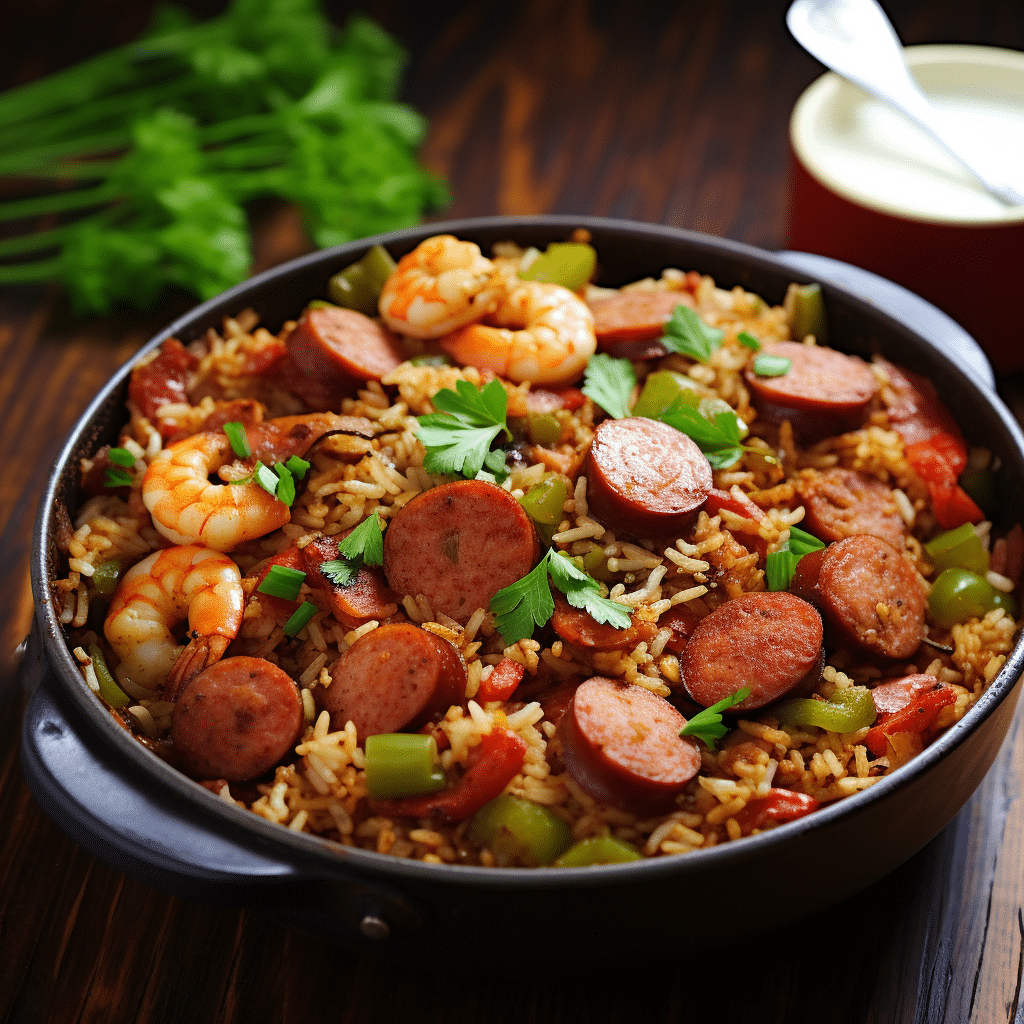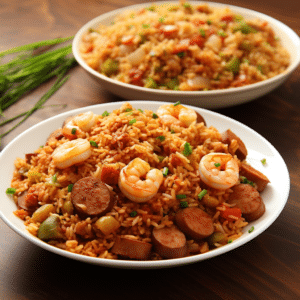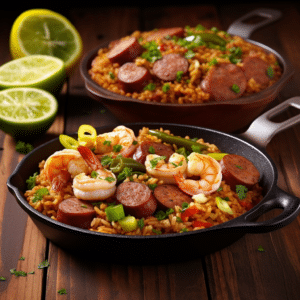
Dirty Rice Vs. Jambalaya
Dirty rice is a traditional dish with roots from Louisiana. The ground beef used in its preparation gives the rice a muddy hue, hence the term dirty rice. Ground meat, green bell pepper, onion, celery, and cayenne pepper are cooked together in this dish. You can eat dirty rice by itself or as a complement to another dish.
Jambalaya is a rice dish with French, African, and Spanish roots. Meat and vegetable bits are combined with cooked rice to make this dish. Unlike dirty rice, which uses already-cooked rice to bind the meat and other ingredients together, jambalaya starts with unprocessed rice.

Dirty Rice
Dirty rice originated from Louisiana in the creole region in the 1700s. During the era of the slave trade, masters brought slaves from Africa and carried foods from Africa for the slaves. They brought in a lot of rice, which was the only food slaves were allowed to eat. The slaves were given internal chicken organs such as liver, kidney, and heart. They creatively created a rice dish of rice and these internal organs and added broth.
This dish was named dirty rice due to its color. Dirty rice can also be found in other parts of South America. This rice dish is also known as cajun rice, rice dressing, and chicken and rice. Traditionally it was prepared using internal chicken organs, but with time other meats such as beef, chicken, seafood, and sausages have been incorporated.
Jambalaya
Jambalaya traces its origin in Louisiana. It was influenced by the Spanish and French culture of immigrants in the region. The transatlantic slave trade, to a great extent, influenced the modern-day jambalaya, which is closely related to West Africa’s jollof rice dish. This dish is made in two variations; the cajun jambalaya made without tomatoes, and the Creole or red jambalaya, which is made with tomatoes.
Dirty Rice Vs. Jambalaya: Overview
Preparation
Dirty Rice
To cook dirty rice, you need ground meat, which can be beef, pork, chicken, seafood, or sausage. You will also require the “trinity” I.e onion, green pepper, celery, broth, cooked rice, salt, and garnishes. Start by cooking the ground meat and all other ingredients and brown them. After the meat is done, add the cooked rice and broth, and garnish. Your dirty rice is ready.
Jambalaya Rice
A major difference between the preparation of dirty rice and jambalaya is that with dirty rice you use ground meat and precooked rice, whereas, with jambalaya, you use chunks of meat and raw rice. Jambalaya can be made in two variations, the creole style or the cajun style. In Creole style, the meat is added to onion, celery, and green pepper. Vegetables and tomatoes are added, followed by seafood.
The mixture is then browned before adding broth and rice to the mixture and cooking it. In some variations, the rice is baked after the broth has dried up. In the cajun style, meat is browned in a pot, and the trinity of onion, green pepper, and celery are added. They are sauteed till soft, adding seasonings and stock. Rice is then added and cooked till done. There are other variations of this dish such as white jambalaya.
What To Serve
Jambalaya
Jambalaya is often served as a main dish. A complimentary side dish or a dessert can go well with jambalaya. You could try serving jambalaya with chicken, fried okra, cornbread, corn on the cob, green salads, collard greens, and potatoes; the list is endless.
Dirty Rice
Dirty rice is served as a main or side dish. You can serve with hush puppies, sweet potato casserole, mac n cheese, coleslaw, steamed vegetables, broccoli salad, and fruit salad, among others.
How To Store Leftover Jambalaya And Dirty Rice
Rice may contain a bacteria known as Bacillus cereus. Rice dishes should not be left at room temperature for long as these bacteria multiply faster in warm environments. This bacteria can cause food poisoning.
Ideally should be refrigerated within one hour of cooking. To ensure that the leftover rice cools fast enough, spread the rice on a thin layer of foil or tray. When cooled, put in an airtight container and refrigerate for 3 to 4 days. If frozen, consume within 3 to 4 months. Only reheat refrigerated rice once, ensuring that it heats properly; it should be steaming hot.
Food poisoning
Rice dishes can easily cause food poisoning. This can occur when you eat rice that contains Bacillus cereus bacteria. Signs of food poisoning are vomiting, diarrhea, nausea, stomach cramps, abdominal pains, fever, chills, and general malaise. To avoid this poisoning, observe high levels of hygiene and avoid leaving cooked rice at room temperatures for long.
When reheating, ensure the rice heats properly. Let it steam hot or boil before consuming it. On most occasions, food poisoning may not need medical attention. Take lots of fluids and Oral Rehydration Solutions(ORS). If symptoms persist, you may consider seeking medical attention.

A Brief Summary Of Jambalaya And Dirty Rice
Below is a summary of the differences between dirty rice and jambalaya.
| Description | Dirty rice | Jambalaya |
| Rice type used | Precooked | Raw |
| Meat used | Ground or tiny pieces | Chunk |
| Serving | Main or side dish | Main dish |
| Ease of cooking | Easy | difficult |
| Use of tomatoes | Not used | Used in creole style Not used in cajun style |
| Vegetables in cooking | No | Yes |
| Roux | Yes | Rare |
| Use of internal organs | Yes | No |
| Other names | Cajun rice, chicken and rice | Creole rice |
In conclusion, dirty rice and jambalaya are two distinct rice dishes that originated in Louisiana. Dirty rice can be served as a main or side dish, while jambalaya is served as a main dish. Dirty rice is made with ground meat, or internal organs, with jambalaya with chunks of meat.